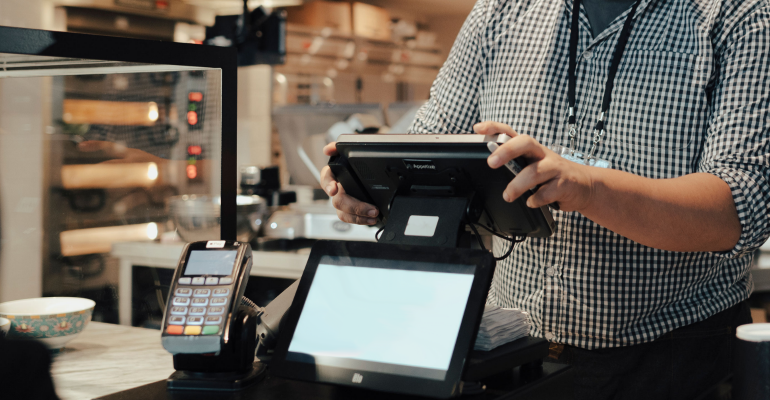Sponsored by Appetize
Restaurant operators face many challenges as they grow their businesses. Every aspect of expansion offers a new puzzle to solve - from identifying and securing new locations, to hiring new team members and extending the supply chain. But one critical ingredient for growth is often overlooked, until it is too late. As operators plan, it is essential that they assess their Point of Sale (POS) solution to ensure it is up to the task.
If you have 2020 growth plans, be sure to ask these questions about your POS:
#1: Will the payment processing fees associated with my POS scale?
Many popular POS solutions are designed to support the needs of low-volume, single-unit restaurants, and are marketed as low hassle choices for start-ups and smaller independent chains.
But as sales grow, the “one size fits all” payment processing fee structures offered by these vendors can quickly become cost prohibitive for an operator. It is worthwhile to calculate how your processing fees will scale along with your growing business, and evaluate your options across the highly competitive merchant services market.
Click here to learn how to calculate your payment processing fees and compare your options.
Question 2: Can my POS perform multi-unit & multi-channel menu management?
As you plan to expand your number of locations, it is worthwhile to make sure your POS provides the menu data management capabilities you’ll need.
Most lightweight POS solutions have limitations when it comes to multi-unit and multi-channel menu management. It’s essential to evaluate your current POS using real-world test cases to understand how efficiently it will support day-to-day management. Some example test-cases include:
- Adding a new menu item across all locations
- Implementing a price change to an existing menu item across all locations within a certain geo-region
- Changing the available modifiers on an existing menu item across all locations at once
If you suspect your POS isn’t up to the task, it’s smart to seek a solution with enterprise-class menu management functionality.
Click here to learn how to evaluate the menu management capabilities or your current POS, and critical features to look for in a new solution.
Question 3: Can my POS provide real-time, multi-unit analytics & reporting?
As an operator, you must be able to analyze performance with precision and agility. You need instant and secure access to analytics about every aspect of your business, and the ability to evaluate operation at all levels - from a single location, up through to the entire organization. You need the ability to securely delegate reporting tasks to team members, and to rapidly identify potential loss prevention issues.
The analytics and reporting needs of a multi-unit restaurant can prove challenging, time-consuming, and high-risk if operators try to use a POS that was only designed to support single-location businesses. Make sure your POS empowers you to:
- Manage all reporting & analytics from a single, unified dashboard
- Quickly render dashboards and build reports based upon real-time data across any time-frame
- Easily scope, “slice and dice”, and visualize data at any level of the organization
- Quickly respond to audit and legal requests with scopable reporting and immutable logs
- Easily export analytics data to 3rd party services, and integrate 3rd party data (e.g. weather, sensor, etc.) to improve reporting intelligence
Click here to learn how to evaluate the reporting & analytics capabilities or your current POS, and critical features to look for in a new solution.
Question 4: Can my POS support our omnichannel and “frictionless” guest service goals?
Even if you don’t have any specific self-service and frictionless plans in the near-term, it’s smart to know how your POS can support the increasingly popular “table stakes” of modern guest engagement:
- Mobile App & Delivery Integrations: Mobile ordering and delivery has increased in popularity for years, and shows no signs of slowing down. Whether through a native app, a 3rd party app, or via a browser - guests want the choice to conduct some, or all, or their transaction from their mobile devices.
- Self-Service Kiosks: Like movie cinemas and airports before them, limited service restaurants are increasingly turning to kiosks to meet guest demand for intuitive, efficient self-service options.
- Customer Facing Displays: When guests place their orders with a human at a POS terminal, the experience they are provided can have a significant impact on overall satisfaction. Increasingly, Customer Facing Displays (CFDs) are becoming essential pieces of technology in the transaction, as they empower guests to confirm their order as it is being entered, and provides operators the ability to recommend upsells, bundles, LTOs, and personalization via the display.
Click here to learn how to evaluate the self-service & frictionless guest service capabilities of your current POS, and critical features to look for in a new solution.
Can Your POS Keep Up With You?
Your POS can easily become a huge barrier to growth, but it doesn’t have to. Thoughtfully assessing a POS solution’s capabilities - with a view to planned future growth and scale - can have a lasting impact on revenue, productivity, and overall success. To learn more, click here.




